For most, the concept of underlayers in hanfu probably isn’t at the forefront of their concerns: nothing wrong with the underwear that we usually wear, anyway! But as we delve deeper into our hanfu journeys it soon becomes apparent that there are a lot of functional and aesthetic benefits to having a few staple underlayers in your hanfu closet.
In this article, I’ll go over what the different kinds of underclothing are, the benefits of using them, what the closet staples are, and how to choose them. Let’s take a look!
WHY WE WEAR UNDERLAYERS
First off, why do we need these underlayers anyway? There are a number of practical and visual pros that wearing hanfu underlayers, or neiyi or zhongyi, as they’re called in Chinese, can have.
One benefit is practical: as you go into fancier and more high-quality fabrics, like embroidered or gold-threaded material, you’ll end up realizing that the underside of these fabrics are not the most comfortable, especially if you have sensitive skin like me. Gold or silver threads can end up scratchy, embossed fabric is uneven against the skin, and even only very slightly textured fabric can be irritating when it’s rubbing against your skin for a long time, since everything is loose or wrapped around your body, only held in place with friction. Underlayers can solve this problem by providing an extra buffer between beautiful scratchy fabric and your skin.
Another functional reason to wear underlayers is that a lot of hanfu available these days is made with chiffon, which is half-transparent—not great if you don’t want a wardrobe malfunction! Even some fabrics that usually are pretty opaque can show up as kind of translucent in bright light if they’re light colored. Wearing underlayers like an underskirt or pants can help with this problem, as they’re usually specifically made with non-transparent fabric for the purpose of wearing under hanfu.
As for aesthetics, there are a number of hanfu styles that can just be taken to the next level with underlayers. Think that underlayers are only supposed to be worn on the outside, not seen on the outside? Think again! Plenty of round-collar robes and cross-collar pieces can be worn with an extra layer underneath: the effect of only the collar of your underlayers peeking out around the neckline can add some layers to your outfit. Same with the cuffs of your sleeves poking out from under more colorful sleeves—it can be a nice effect to add some complexity, especially since a lot of the outer layers are solid or uniformly patterned.
If you’re afraid that too many layers will make it too hot, don’t worry—choosing thin underlayers made of cotton or silk allows for breathable layering, and sometimes, depending on the kind, underlayers can also be used as outer layers instead of cumbersome silk or polyester. On the flip side, in the winter, layer thicker fabric underneath your hanfu for an extra layer of warmth. Let’s take a look at the different kinds of underlayers—there are a lot!
KINDS OF UNDERLAYERS
First up is the zhongyi. This consists of a unisex top and a pair of pants, or zhongku, respectively. They’re very simple, usually plain white, nothing fancy. Most sellers of zhongku make the waists either drawstring or elastic for convenience these days, so you won’t have to worry about any pesky ties. The top is usually either cross-collar or round-collar, narrow-sleeved and high-necked. Occasionally there will be a little bit of embroidery on the collar and cuffs of the sleeves for decoration, since those are the parts that can sometimes be seen. These are the most basic of hanfu underlayers, and worn under pretty much everything from ruqun to aoqun, as long as there’s enough fabric to cover it all.
Alternatively, if it’s really hot and you don’t want to wear a whole other layer underneath your top, there area also a bunch of false collars you can buy—literally just the collar part of a cross-collar top, tied down around your shoulders before you layer another piece of clothing over it so that the collar part peeks out. Just beware that you can’t wear these with a transparent outer top.
Chenqun, or underskirts, can also be substituted for the zhongku. It’s really great to just have one of these on hand since so many skirts are just slightly transparent or scratchy. Most of these are also elastic waisted, with a smaller circumference so as to not mess up the silhouette of your skirt, but there are also ones that function like normal hanfu wrap skirts.
Next we can take a look at the family of underlayers we call moxiong: the diaodai, songmo, and zhuyao. Moxiong refers to the class of women’s hanfu that goes directly across the chest, and includes several subtypes, functioning as a bra in supporting the chest but also often worn on the outside as outerwear as well.
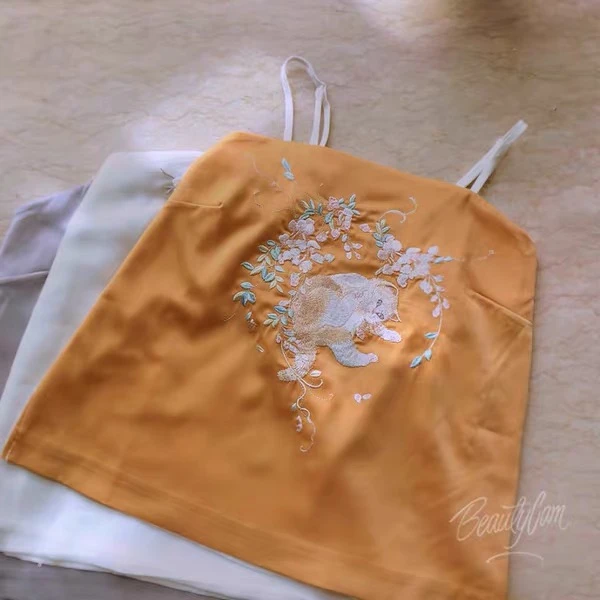
diaodai
Diaodai resemble a simple tank top, with straps and sometimes a small elastic in the back to help it stick—it’s more modern and technically counts as hanyuansu, but way easier to keep on your shoulders and very comfortable and intuitive to wear. These are usually quite free-flowing and not very supportive, so I’d still recommend wearing some kind of bra underneath.
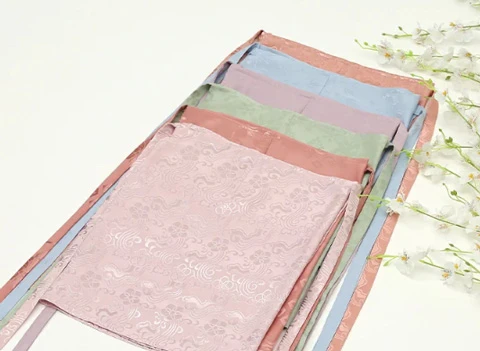
songmo
The songmo is a kind of moxiong popular in the Song dynasty, for which it’s named, consisting of a single piece of fabric wrapped around the torso—think of it as a really short chest-high skirt. There aren’t any straps, so it can be kind of annoying to keep up, but it’s incredibly easy to make. Often it’s decorated with a few kinds of folds in the center or some kind of embroidery along the top hem or in the center.
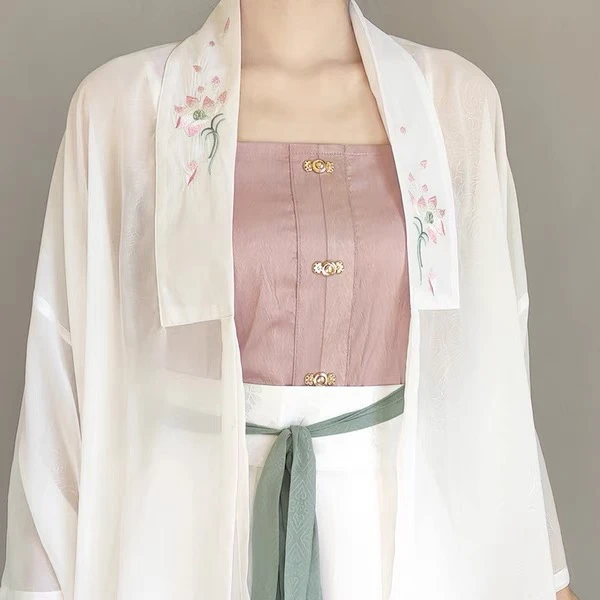
zhuyao
Last is the zhuyao, the fanciest of the three. Popular in the Ming dynasty, these are characterized by the line of buttons that runs down the front, specifically zimukou, directly translated as character closures. Sometimes they have straps, sometimes they don’t, but they’re worn in a variety of occasions: on their own in the summer, under the aoqun as chest support, with a jacket thrown over them, however you want. They’re probably the most supportive out of all three since they actually open in the front, since buttons didn’t start being made until the Ming dynasty.
HOW DO I START ADDING UNDERLAYERS TO MY CLOSET?
Glad you asked! Here are a few things to watch out for.
For starters, the staples that I would recommend you have at least one of is one set of thin white zhongyi and one moxiong (doesn’t matter which one), and if possible I’d recommend both one skirt and one pair of pants. Expanding beyond that I’d recommend all of these things but in black, or thicker. That way you’ll never be caught off guard based on the color of your clothing, and you always have something you can pull from the closet if you end up with a set that ends up less opaque than you thought it was.
Also, some shops will sell zhongyi along with expensive sets, but hike the price of the zhongyi up to match the expensive outer layers—not worth it! Just use the one set of zhongyi you already have instead! It’s like having a white t-shirt or a pair of jeans, there’s no use buying a new one for every single outfit.
Now, when choosing your zhongyi, this is what you’re going to be wearing next to your skin, so do your research. I’d say try to look for silk, but nobody’s rich, so instead look for pure cotton—guaranteed to be less irritating and more comfortable than a lot of other fabric.
Also make sure you really look into the sizing charts to find your size. If it doesn’t fit you, it’s going to mess up the lines of your outfit forever. Soon enough wearing underlayers with hanfu will be second nature—you may even find yourself wearing them when you’re not wearing hanfu and mixing them in with your daily outfits! As usual, feel free to ask if you've got any questions. Thanks!
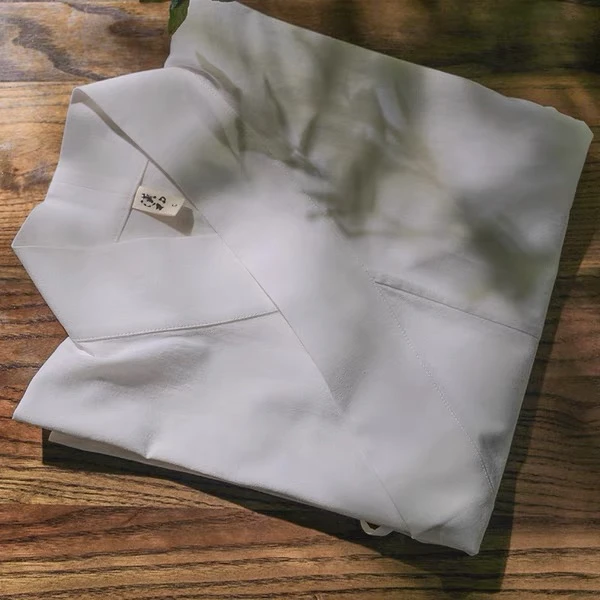
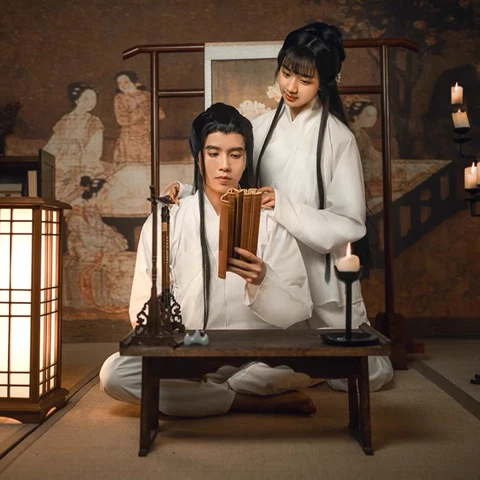

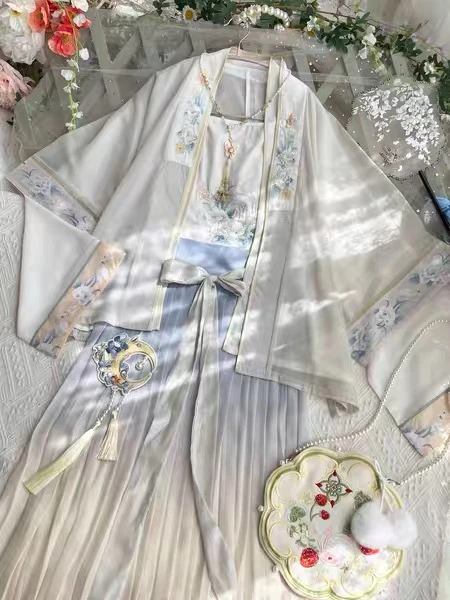
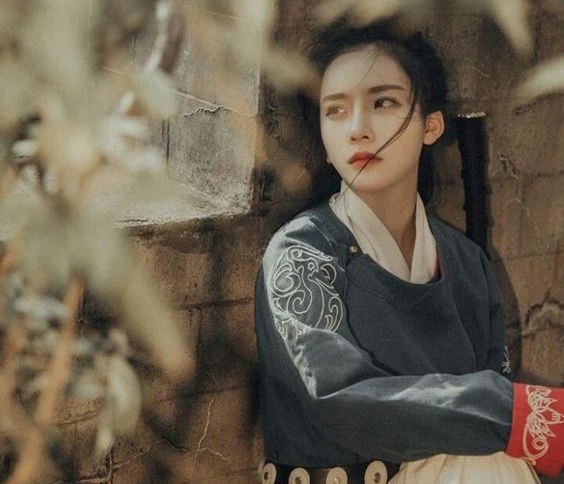
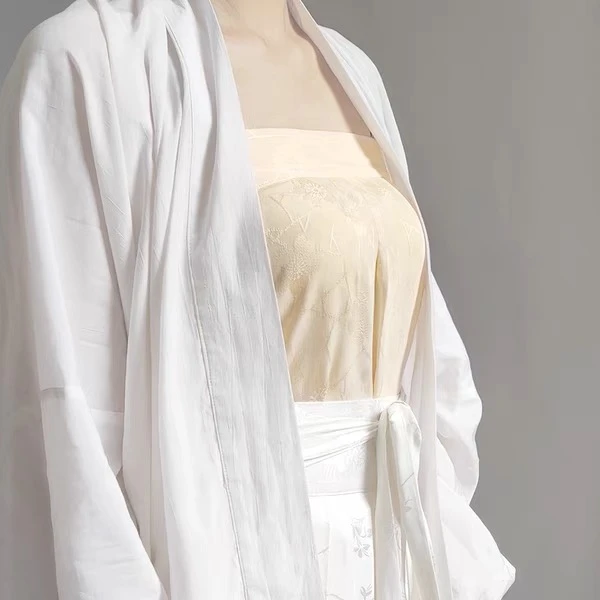
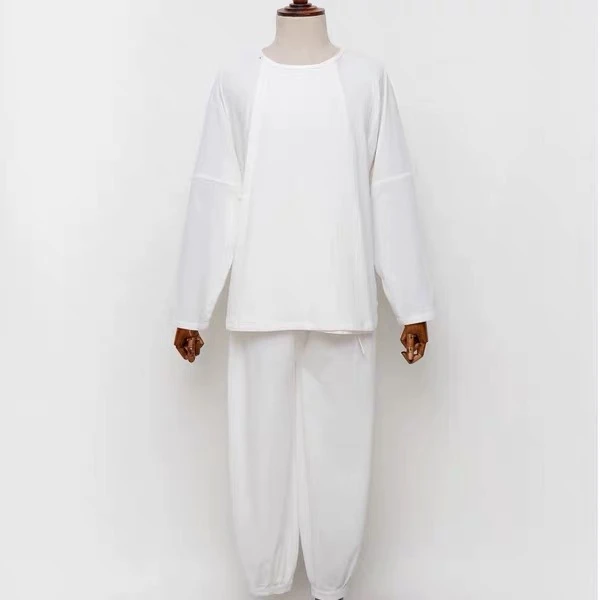
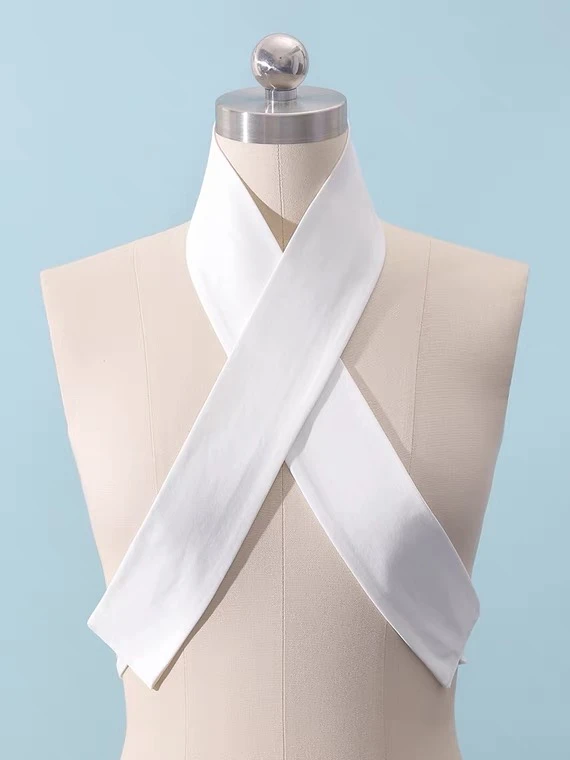
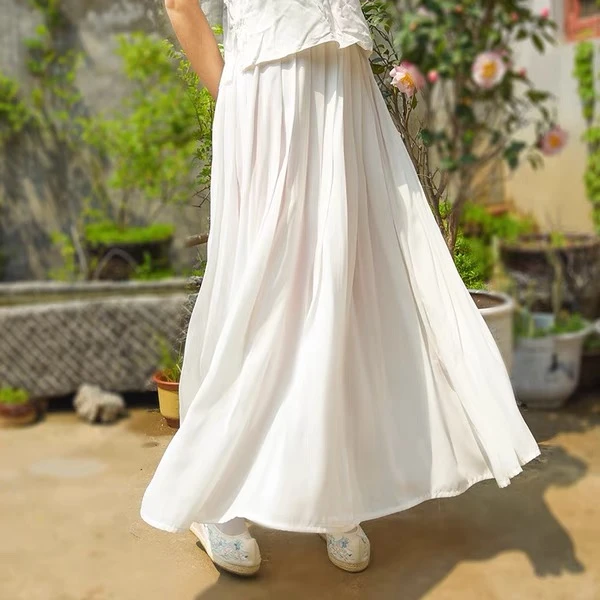
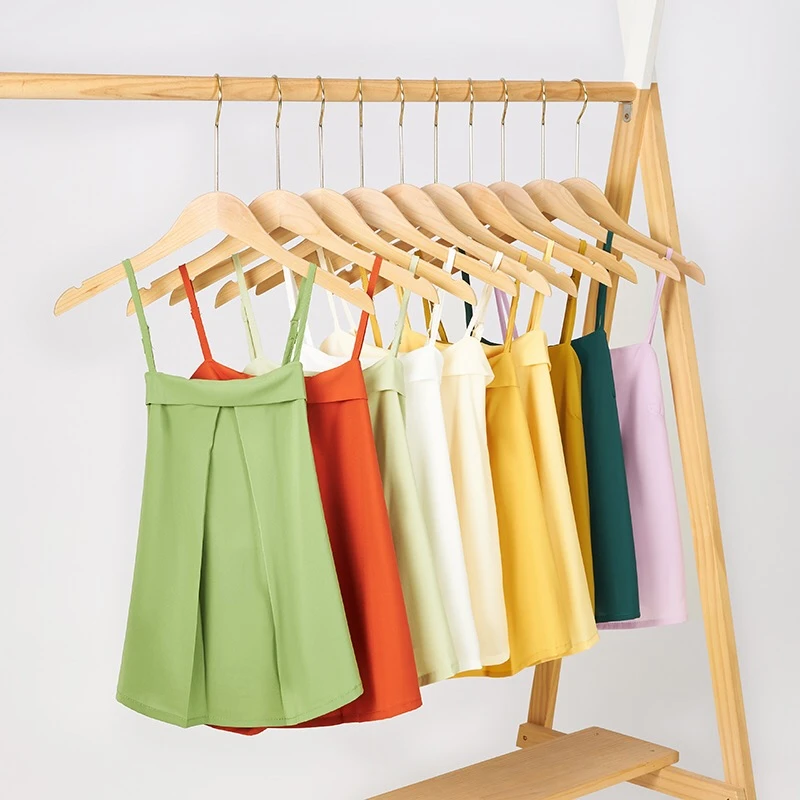

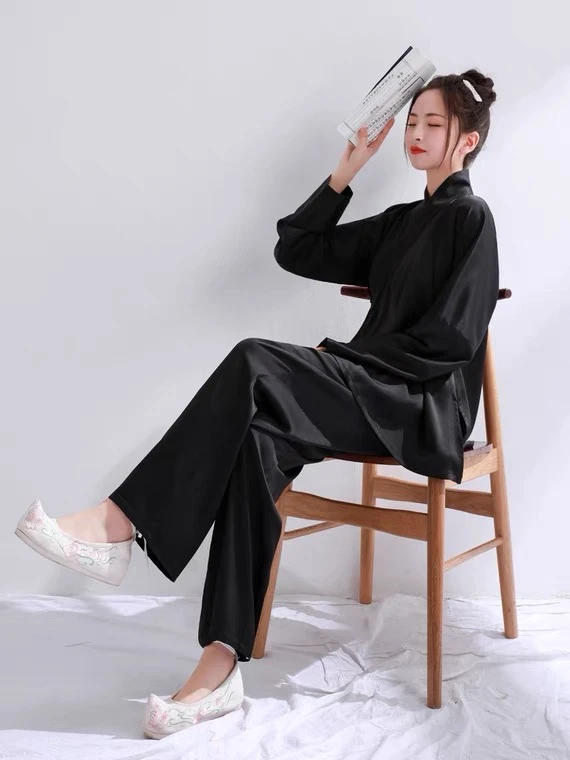
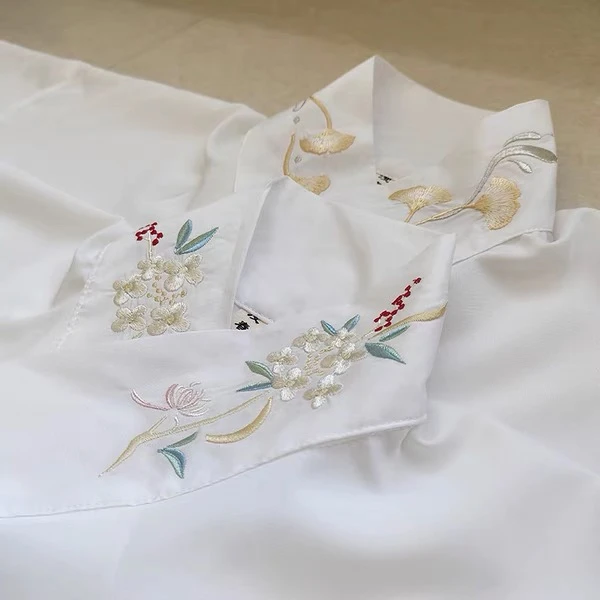
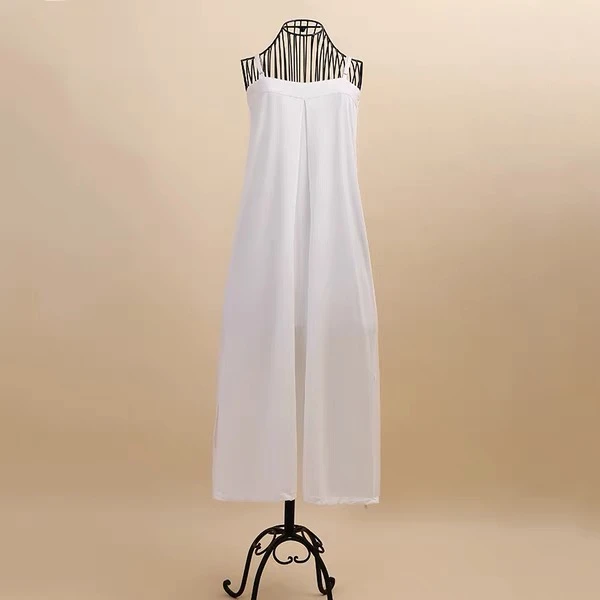
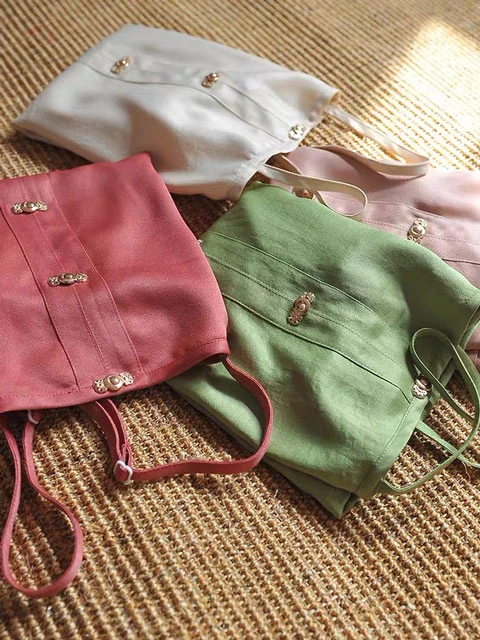


Bonjour à tous, Merci pour cet article ☺️ Je vais essayer de me confectionner un zhongyi en coton avec le patron que vous proposez : Hanfu Making(1) - Zhongyi Cutting & Sewing Patterns. Merci encore 🥰
♪( ´▽`) Thank you!
Was looking for this. thanks.
Very nice take on underlaying the hanfu.
This is so helpful and well-written, thank you!!
I usually make the underlayers out of 210g linen. So soft and comfy!
Ingin mengoleksi banyak sih,,,